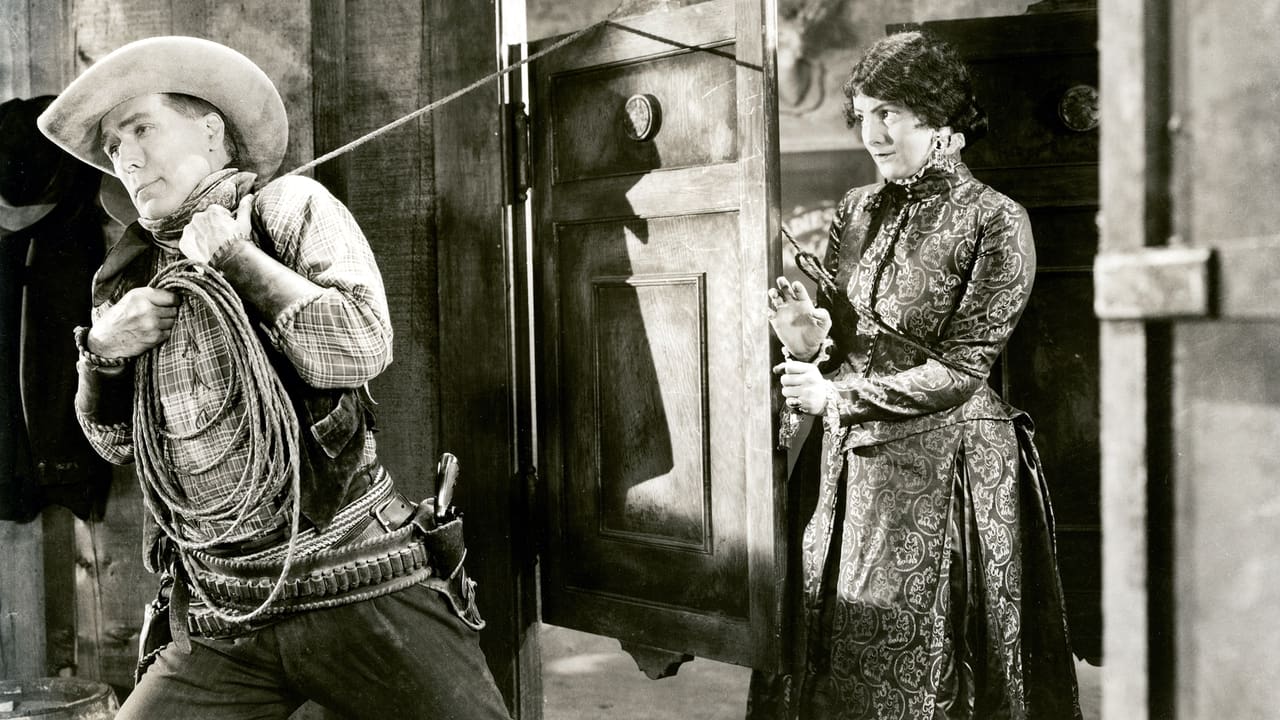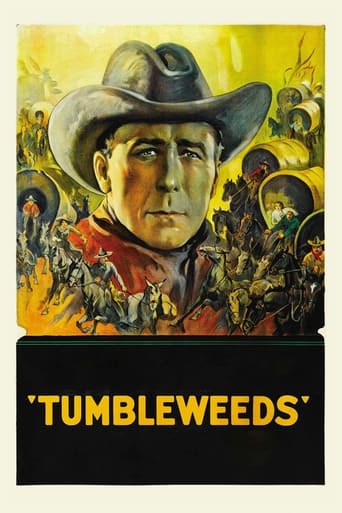

William S. Hart plays a tough and laconic cowboy--the sort of guy who loves the life and has no desire to settle down and get a place of his own. However, he meets a pretty lady (Barbara Bedford) and immediately decides that marrying and settling down is a GREAT idea. So, as the Oklahoma land run is about to commence, he decides to take part in this insane opportunity to get a homestead.Let me digress a bit to explain. In 1889, a law was signed that opened up 2,000,000 acres of land in Oklahoma to settlers. However, instead of signing up for it to stake your claim, they literally staged a race--where folks rode like crazy into the open land and grabbed a marker. Then, upon returning it to the government agent, they'd be given that particular parcel. And so, if you wanted the best land (such as along a river), you had to be fast--or cheat (these folks was given the nickname 'Sooner' because they went in BEFORE they were officially allowed).What Hart does not know is that the lady's half-brother is trying to cheat in order to get the best land AND he sets up Hart to make it look like he's trying to be a Sooner instead! Can William manage to expose this jerk AND still win the sister's love? Like so many of Hart's films I have seen, Hart is a rather quiet fellow who lets his fists do the talking. He is NOT some pretty boy and he seems to look more like you'd expect a real cowboy to look. While this is not among his very best films, it's well made and talks about one of the most forgotten parts of US history--the land runs. Worth seeing.By the way, the copy I had was silent but had musical accompaniment that was added later.
... View MoreOnce it was among the most popular movies of its kind, and now it's generally remembered only by silent movie fans, but "Tumbleweeds" is a classic silent Western that's still worth seeing. To be sure, a lot of its appeal now comes from nostalgia, but in its time it was close to the top of its genre.The opening scenes start the story nicely, and they also give it some thoughtful overtones, with cowboys Hart and Lucien Littlefield coming to realize their role as "Tumbleweeds" in a changing world. The 'tumbleweed' image is used well in developing Hart's character, as he faces the consequences of the land rush and of the personal affairs he gets involved in. The story itself has a lot of familiar elements, without many surprises, but the atmosphere and the characters are enough to carry it.The land rush sequence is probably the most exciting part of the movie, and it is quite a fine set piece. It's later followed by a fast-paced climactic chase that also works well. The action makes a good complement to the atmosphere of the changing frontier, making it a movie that fits together nicely, and that still works pretty well.
... View MoreI can see how one would be sentimental over William S. Hart's last Western, especially considering Hart was such a sentimentalist himself. But, his prime was years ago, with such films as "Hell's Hinges" (1916), "The Narrow Trail" (1917) and "Wagon Tracks" (1919). "Tumbleweeds" is far removed from those Hart vehicles. Hart had done away with his patented good bad-man persona; here, he's a gentler and fatter, goofy but good-natured, old cowboy. Hart also gets a dimwitted comedic sidekick, unfortunately. The filmmakers, first, attempt some romantic imagery, which generally fails, and, then, aim too much for humor, with lots of buffoonery. This new style probably reflects Hart's attempts to emulate the new B-Western shoot-em-ups, which had been surpassing his more adult Westerns in popularity by attracting a large audience of young boys.The villains suddenly impose a more dramatic tone to the second half of the film, and lead it to its inevitable conclusion. The fatality of the open frontier in the story mirrors that of Hart's career, but rather than the evident passion and romanticism one gets in his earlier pictures, we get song title cards. Additionally, Hart is competing for a civilized woman here, rather than for his Christian soul. At least, it's nice to see a more friendly, if brief, treatment of Native-Americans in this Hart outing. And, Hart does have one more exciting, well-edited horserace climax in him, but it was definitely time to hang up the saddle.
... View More"Tumbleweeds" is a classic of the silent era. It marked the final film in the career of western movie pioneer William S. Hart. The plot revolves around the Cherokee Land Rush of 1889 Oklahoma where a large tract of land was thrown open to the public for the taking by the American government. Don Carver (Hart) and his pal Kentucky Rose (Lucien Littlefield) had been earning their living as "tumbleweeds", another name for drifting cowpokes. When the last roundup is completed, they decide to take part in the land rush. Carver meets up with the charming Molly Lassiter (Barbara Bedford) after having had an altercation with her half brother Noll (J. Gordon Russell). Noll teams up with Bill Freel (Richard R. Neill) to acquire a choice ranch section by any means necessary. Turns out that Carver has his sights set on the same ranch which he wants to get for Molly. The highlight of the film is of course, the land rush sequence. It is marvelously staged by Directors King Baggot and Hart himself. A cast of thousands was employed. A remarkable piece of film making for this or any other time. The version of the film that is usually shown these days is the 1939 re-issue which had sound effects added, as well as a moving prologue filmed especially for this version. It features Hart coming out of retirement and describing the film and then talking about his career and in effect saying goodbye to all of his fans. He had left films after "Tumbleweeds" following a dispute with the film's distributor. Hart had always insisted on realism in his films. This had worked in his early films but in the 20s, he had to compete with the more popular films of the flamboyant Tom Mix. He had reached his 60s by this time so he wisely decided to go out on top. Ohh...the thrill of it all!
... View More